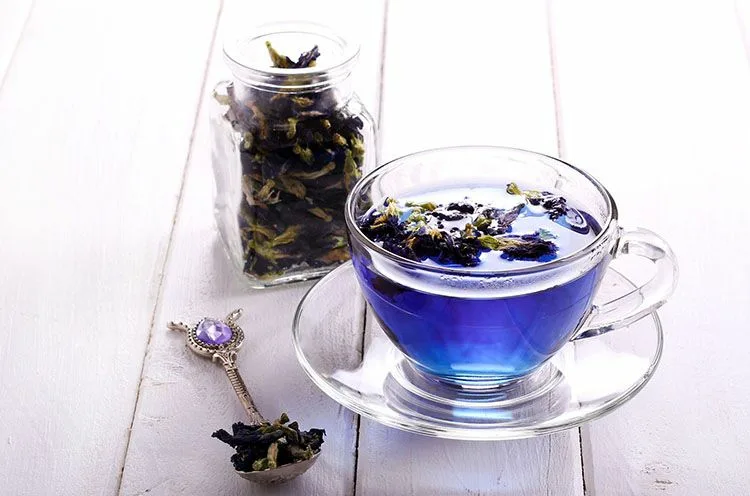What is Blue Tea?
Blue tea, also known as butterfly pea flower tea, is an herbal tea made from the vibrant blue petals of the Clitoria ternatea plant. This tea is known for its striking blue color, which changes to purple when lemon or other acidic substances are added. Originating from Southeast Asia, blue tea has been used in traditional medicine and as a natural food coloring for centuries.
Nutrients in Blue Tea
Blue tea is packed with a variety of nutrients that contribute to its health benefits:
- Anthocyanins: Powerful antioxidants that give the tea its blue color.
- Flavonoids: Compounds that have anti-inflammatory and antioxidant properties.
- Vitamins: Contains vitamins such as vitamin C, which supports immune function.
- Minerals: Provides essential minerals like iron, magnesium, and potassium.
- Amino Acids: Includes beneficial amino acids that support overall health.
Benefits of Blue Tea
- Antioxidant Properties
The high levels of antioxidants in blue tea help combat free radicals, reducing oxidative stress and preventing cellular damage.
- Anti-Inflammatory Effects
Blue tea’s flavonoids have anti-inflammatory properties that can help reduce inflammation and promote overall health.
- Enhanced Cognitive Function
The antioxidants in blue tea support brain health, potentially improving memory and cognitive function.
- Weight Management
Blue tea may aid in weight loss by boosting metabolism and helping the body burn fat more efficiently.
- Stress Relief
The calming effects of blue tea can help reduce anxiety and promote relaxation, making it a great beverage for stress relief.
Blue Tea Benefits for Skin
- Anti-Aging
The antioxidants in blue tea help reduce the signs of aging by combating free radicals and promoting collagen production.
- Brightening Effect
Regular consumption of blue tea can help achieve a more radiant and even-toned complexion.
- Hydration
Blue tea helps keep the skin hydrated, reducing dryness and improving overall skin texture.
- Skin Soothing
The anti-inflammatory properties can help soothe irritated skin and reduce redness.
Side Effects of Blue Tea
While blue tea is generally considered safe for most people, it’s important to be aware of potential side effects:
Allergic Reactions: Some individuals may be allergic to butterfly pea flower, resulting in symptoms like itching, swelling, or difficulty breathing.
Low Blood Pressure: Blue tea may lower blood pressure, which could be an issue for those with already low blood pressure or those on blood pressure medication.
Digestive Issues: Consuming large amounts of blue tea might lead to digestive discomfort in some individuals.
How to Use Blue Tea
- Brewing Blue Tea
To brew blue tea, steep 1-2 teaspoons of dried butterfly pea flowers in hot water for about 5-10 minutes. Strain the tea and enjoy it hot or cold. Add lemon or honey to enhance the flavor.
-
Blue Tea Face Mask
Combine brewed blue tea with ingredients like honey and yogurt to create a soothing face mask. Apply to the skin, leave on for 15-20 minutes, and rinse off with warm water.
- Blue Tea in Cooking
Use brewed blue tea as a natural food coloring in recipes like rice, cakes, or cocktails for a unique and vibrant touch.
Incorporating blue tea into your daily routine can provide numerous health and skin benefits, making it a delightful addition to your wellness regimen.



